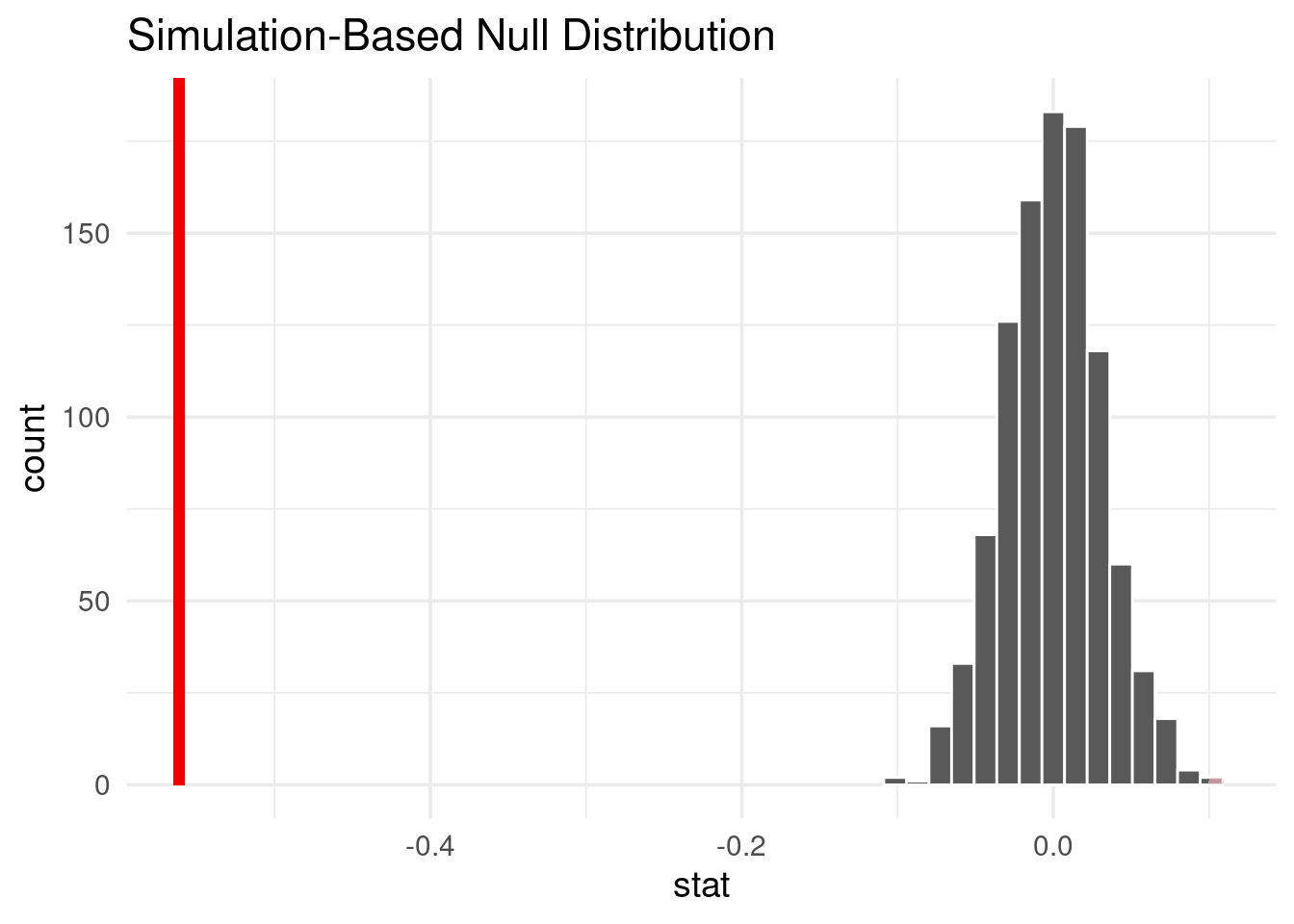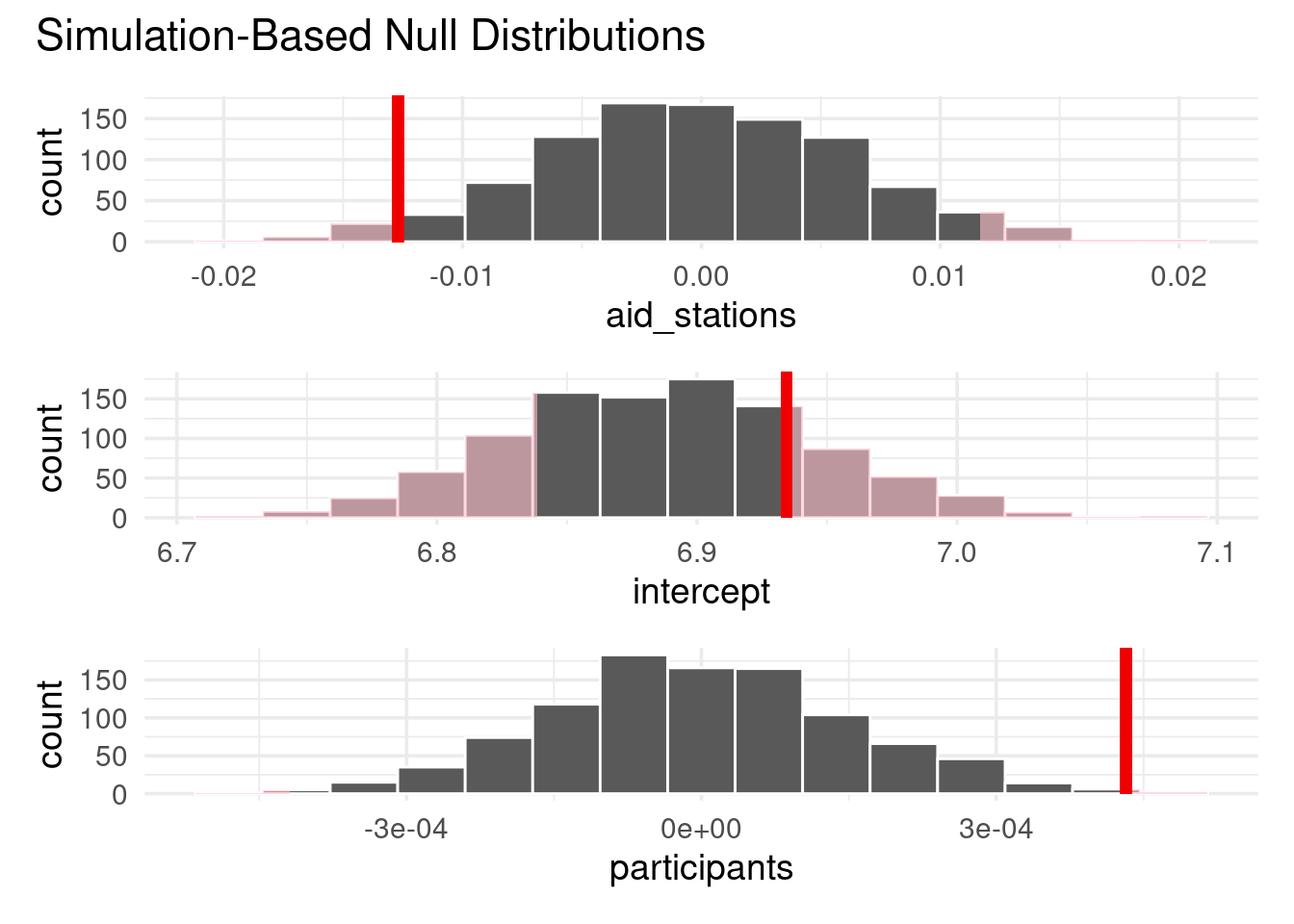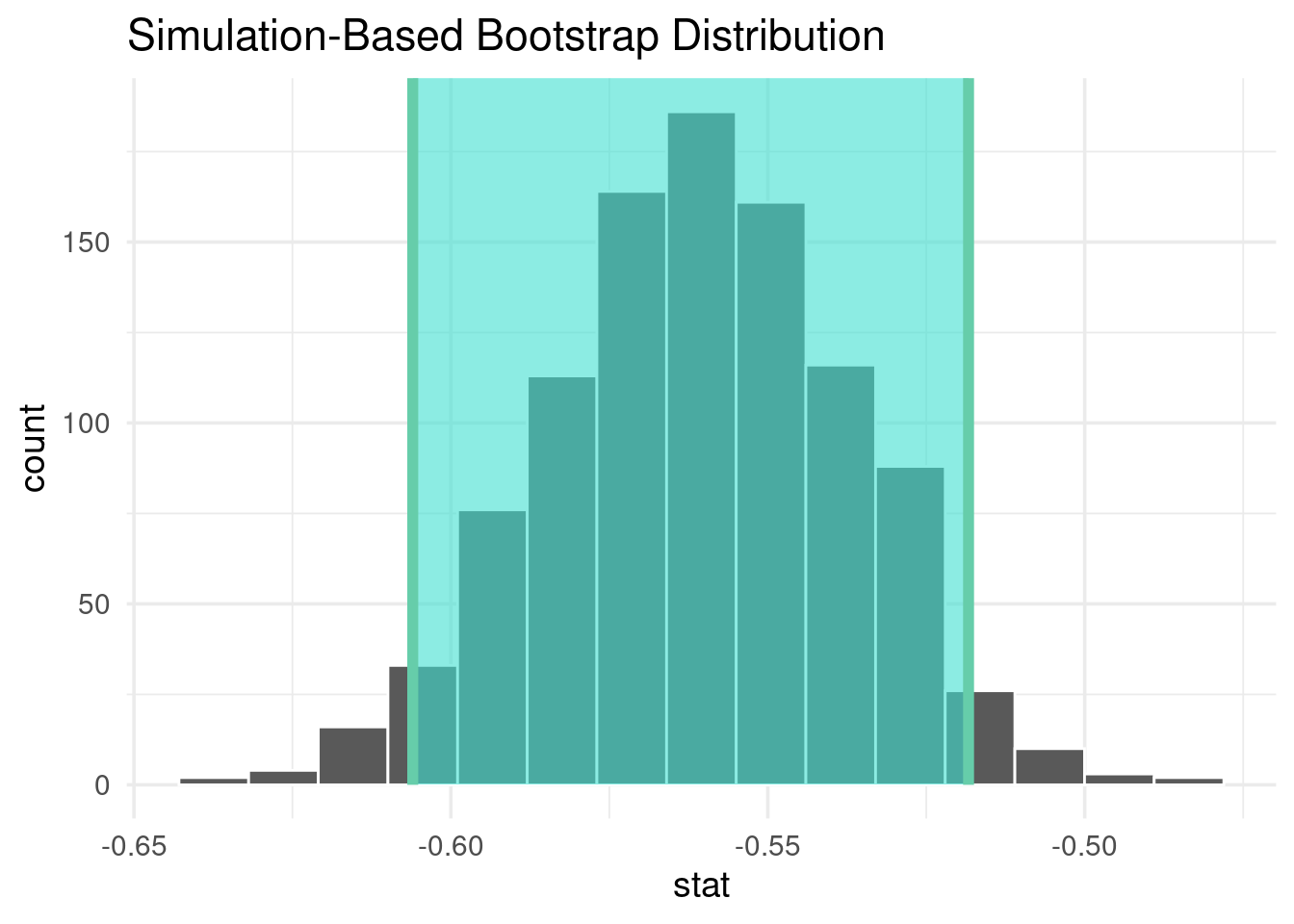p value for idependence based on simulation with permutation
observed <- race_top_results %>%
specify(avg_velocity ~ avg_elevation_gain) %>%
calculate(stat = "correlation")
observed
## Response: avg_velocity (numeric)
## Explanatory: avg_elevation_gain (numeric)
## # A tibble: 1 × 1
## stat
## <dbl>
## 1 -0.561
permuted <- race_top_results %>%
specify(avg_velocity ~ avg_elevation_gain) %>%
hypothesise(null = "independence") %>%
generate(reps = 1000, type = "permute") %>%
calculate(stat = "correlation")
permuted
## Response: avg_velocity (numeric)
## Explanatory: avg_elevation_gain (numeric)
## Null Hypothesis: independence
## # A tibble: 1,000 × 2
## replicate stat
## <int> <dbl>
## 1 1 -0.0108
## 2 2 0.0193
## 3 3 -0.00134
## 4 4 -0.0564
## 5 5 -0.0386
## 6 6 -0.0142
## 7 7 -0.0359
## 8 8 -0.0313
## 9 9 -0.00306
## 10 10 -0.0488
## # ℹ 990 more rows
permuted %>%
visualize() +
shade_p_value(observed, direction = "two_sided")

get_p_value(permuted, observed, direction = "two_sided")
## # A tibble: 1 × 1
## p_value
## <dbl>
## 1 0
Use theory instead of simulation
observed_t <- race_top_results %>%
specify(response = avg_velocity) %>%
hypothesise(null = "point", mu = 7) %>%
calculate(stat = "t")
race_top_results %>%
specify(response = avg_velocity) %>%
assume("t") %>%
visualize() +
shade_p_value(observed_t, direction = "two_sided")

race_top_results %>%
specify(response = avg_velocity) %>%
assume("t") %>%
get_p_value(observed_t, "two_sided")
## # A tibble: 1 × 1
## p_value
## <dbl>
## 1 0.0150
Linear models with multiple explanatory variables
my_formula <- as.formula(avg_velocity ~ aid_stations + participants)
observed_fit <- race_top_results %>%
specify(my_formula) %>%
fit()
observed_fit
## # A tibble: 3 × 2
## term estimate
## <chr> <dbl>
## 1 intercept 6.93
## 2 aid_stations -0.0127
## 3 participants 0.000432
permuted_fits <- race_top_results %>%
specify(my_formula) %>%
hypothesise(null = "independence") %>%
generate(reps = 1000, type = "permute", variables = c(aid_stations, participants)) %>%
fit()
bootstrapped_fits <- race_top_results %>%
specify(my_formula) %>%
generate(reps = 2000, type = "bootstrap") %>%
fit()
permuted_fits %>% get_p_value(observed_fit, "two_sided")
## # A tibble: 3 × 2
## term p_value
## <chr> <dbl>
## 1 aid_stations 0.058
## 2 intercept 0.412
## 3 participants 0.004
visualize(permuted_fits) +
shade_p_value(observed_fit, "two_sided")

bootstrapped_fits %>%
get_confidence_interval(type = "percentile", point_estimate = observed_fit)
## # A tibble: 3 × 3
## term lower_ci upper_ci
## <chr> <dbl> <dbl>
## 1 aid_stations -0.0278 0.00223
## 2 intercept 6.80 7.07
## 3 participants 0.000123 0.000890



